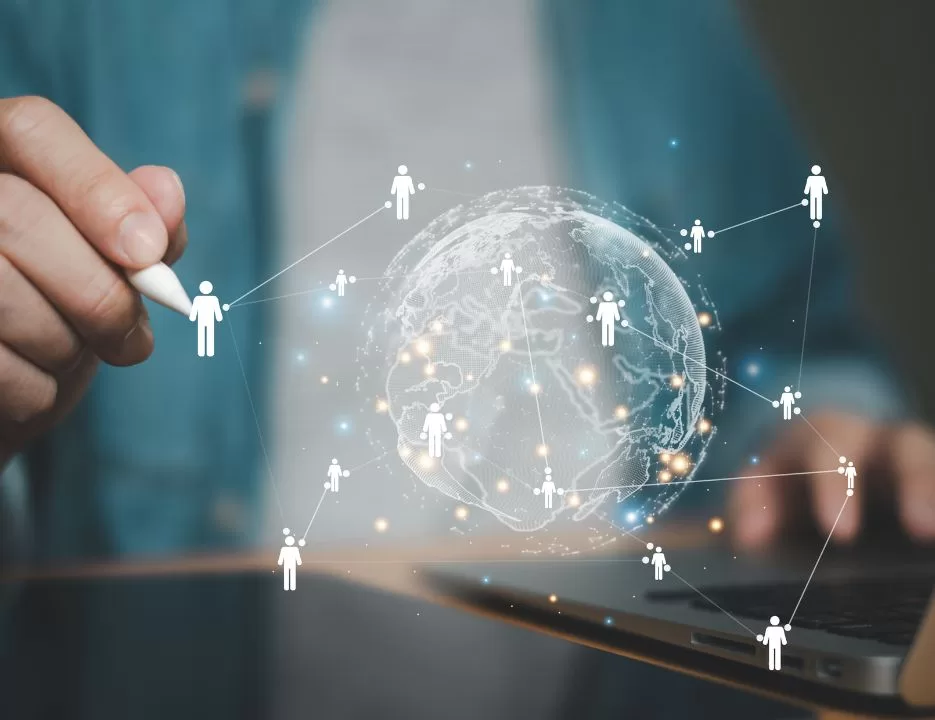
It’s a fact: every company wants to be ahead in the market and be a reference brand. This, in turn, requires a lot of effort and attention to the changes taking place in the world. To stay up to date, you need to keep up with marketing developments. According to Gartner, innovations in this market advance at a pace 2.4 times greater than other business areas and 80% of companies that do not keep up with industry trends risk being left behind.
Marketing transformations over the years can be divided into five stages:
In Marketing 1.0, the company focused exclusively on the product, trying to convey the message: “our product is the best”. There wasn’t even an attempt to differentiate the brand and audience segment, and as the competitors were few, it was enough to show the attributes of the products and communicate massively.
From Marketing 2.0 onwards, companies begin to look at consumers, realizing that it is no longer enough to focus only on the product, since people are diverse and cannot be approached in the same way. The focus becomes the needs and preferences of customers, with the definition of target audiences.
Competition also grows, making people increasingly demanding, and communication channels become more targeted: specialized magazines, cable TV channels and programs aimed at specific audiences emerge.
But soon the internet was born and with it Marketing 3.0, focused on human beings. If in Marketing 2.0 the main concern was the segment, in 3.0 the target is the individual. With the creation of websites, blogs and social networks, people gain a voice and are no longer a large mass, but human beings with their own desires, dreams and difficulties.
A McKinsey study reveals that companies that personalize their marketing strategies are 20% more likely to increase customer satisfaction. It was in this way, trying to understand more and more the culture of brands and their beliefs that digital marketing grew. Another study, by Salesforce, shows that companies that invest in digital marketing have the possibility of increased sales by 30%.
And soon we arrived at Marketing 4.0 which placed significant focus on artificial intelligence, big data, virtual reality and other technologies, suggesting a complete shift to the digital economy. It is important to note that none of these stages have been abandoned, as many companies still operate based on Marketing 1.0 or 2.0. Those that manage to evolve and incorporate these different approaches are ahead in the market.
The digital era and technology at the center of business strategies gave rise to Marketing 5.0. The concept, developed by Philip Kotler, one of the greatest authorities on the subject, is inspired by the idea of Society 5.0, created in 2016 by the Japanese government and marked by artificial intelligence technologies and hyper connectivity. Marketing 5.0 represents a fusion of Marketing 3.0 with 4.0 by emphasizing the importance of humanity and technology with the premise that technology is at the service of humanity, to meet their expectations and needs, promoting well-being and better quality of life .
Smart Cities are a good example of this technological innovation that revolutionizes perspectives on urban space, improving urban mobility and public safety, among other benefits. In marketing, technology is also being used to satisfy consumer desires, offering better experiences during the purchasing journey.
In the book Marketing 5.0: Technology for Humanity, Philip Kotler highlights how one of the challenges of marketing is to bridge the gap between different generations, who grew up with totally different philosophy and lifestyles. Today we have Generation “Z” who prioritize sustainability, inclusion and diversity, and have brought to most consumers the importance of brands’ social responsibility.
To incorporate sustainable purposes into the business and add value to the brand, marketers must be aware of new development models such as the one proposed by the UN in the 17 Sustainable Development Goals (SDGs). Created to guide key decision makers in addressing social and environmental challenges, such as poverty eradication, quality education and gender equality, they provide guidance for companies that wish to transition to this new economic matrix.
The big question is: what technologies can help the marketing department and humanity?
Kotler cites technologies such as Artificial Intelligence, natural language processing, robotic sensors, augmented and virtual reality, Internet of Things (IoT) and Blockchain as essential in helping the marketing department in many ways. Whether to make decisions based on data and be able to make more assertive predictions about where to invest or to diversify strategies, taking experiences from the digital world to the physical world (mainly in retail), not to mention the possibility of speeding up tasks, saving the professional’s precious time so that he can dedicate himself to what “only human beings” can do!
Marketing professionals must see technology as an ally in the task of attracting, winning and retaining customers. The synergy between humanity and technology in Marketing 5.0 offers the opportunity to create deeper and more meaningful connections with the public, personalizing relationships in a way that is aligned with the constantly evolving values and expectations of consumers. By embracing this approach, we can build more effective, humanized and sustainable marketing, looking to the future.
* Sthefany Bernal is a Marketing Analyst at Roost, a technology company specializing in edge computing solutions
Source: https://www.mundodomarketing.com.br/marketing-5-0-explorado-a-tecnologia-em-harmonia-com-a-humanidade/


